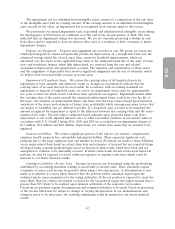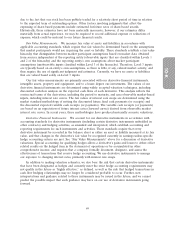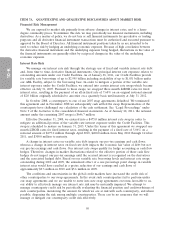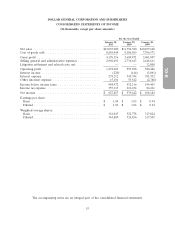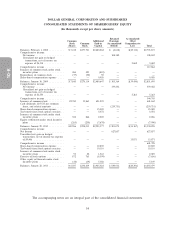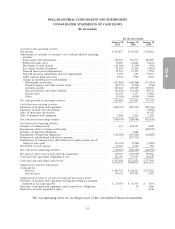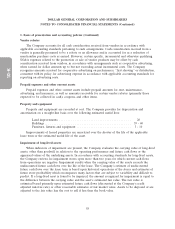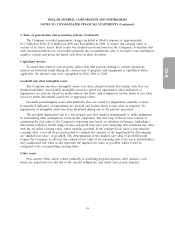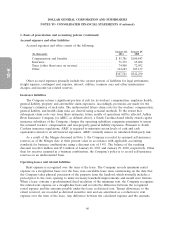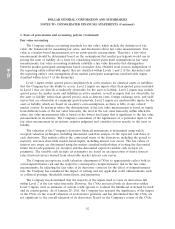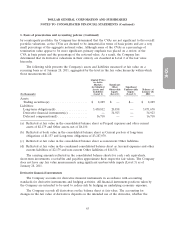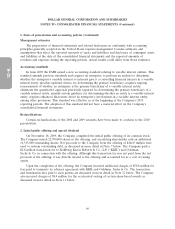Dollar General 2010 Annual Report Download - page 134
Download and view the complete annual report
Please find page 134 of the 2010 Dollar General annual report below. You can navigate through the pages in the report by either clicking on the pages listed below, or by using the keyword search tool below to find specific information within the annual report.
10-K
DOLLAR GENERAL CORPORATION AND SUBSIDIARIES
NOTES TO CONSOLIDATED FINANCIAL STATEMENTS
1. Basis of presentation and accounting policies
Basis of presentation
These notes contain references to the years 2010, 2009 and 2008, which represent fiscal years
ended January 28, 2011, January 29, 2010 and January 30, 2009, respectively, each of which were
52-week accounting periods. The Company’s fiscal year ends on the Friday closest to January 31. The
consolidated financial statements include all subsidiaries of the Company, except for its not-for-profit
subsidiary which the Company does not control. Intercompany transactions have been eliminated.
Business description
The Company sells general merchandise on a retail basis through 9,372 stores (as of January 28,
2011) in 35 states covering most of the southern, southwestern, midwestern and eastern United States.
The Company has distribution centers (‘‘DCs’’) in Scottsville, Kentucky; Ardmore, Oklahoma; South
Boston, Virginia; Indianola, Mississippi; Fulton, Missouri; Alachua, Florida; Zanesville, Ohio;
Jonesville, South Carolina and Marion, Indiana.
The Company purchases its merchandise from a wide variety of suppliers. Approximately 9% and
7% of the Company’s purchases in 2010 were made from the Company’s largest and second largest
suppliers, respectively.
Cash and cash equivalents
Cash and cash equivalents include highly liquid investments with insignificant interest rate risk and
original maturities of three months or less when purchased. Such investments primarily consist of
money market funds, bank deposits, certificates of deposit (which may include foreign time deposits),
and commercial paper. The carrying amounts of these items are a reasonable estimate of their fair
value due to the short maturity of these investments.
Payments due from processors for electronic tender transactions classified as cash and cash
equivalents totaled approximately $26.1 million and $23.2 million at January 28, 2011 and January 29,
2010, respectively.
The Company’s cash management system provides for daily investment of available balances and
the funding of outstanding checks when presented for payment. Outstanding but unpresented checks
totaling approximately $153.6 million and $159.6 million at January 28, 2011 and January 29, 2010,
respectively, have been included in Accounts payable in the consolidated balance sheets. Upon
presentation for payment, these checks are funded through available cash balances or the Company’s
credit facilities.
At January 28, 2011, the Company maintained cash balances to meet a $20 million minimum
threshold set by insurance regulators, as further described below under ‘‘Insurance liabilities.’’
Investments in debt and equity securities
The Company accounts for its investments in debt and marketable equity securities as
held-to-maturity, available-for-sale, or trading, depending on their classification. Debt securities
categorized as held-to-maturity are stated at amortized cost. Debt and equity securities categorized as
available-for-sale are stated at fair value, with any unrealized gains and losses, net of deferred income
taxes, reported as a component of Accumulated other comprehensive loss. Trading securities (primarily
56



